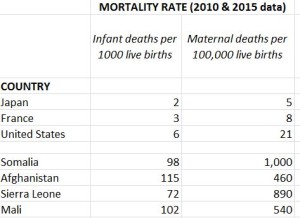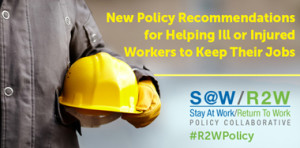May 22, 2018
If you’re interested in RETAIN, let ODEP know today!!
Please be a bumble bee and pass along this pollen information to your contacts at the large healthcare delivery organizations in your area/state that have an outside-facing occupational medicine department. This email is about a strategic opportunity for any occ med program that can also benefit the larger organization in which it sits – as well as hundreds or thousands of newly-injured/ill workers and their employers in their area! It is a VERY TIME SENSITIVE opportunity, so if you know an organization to whom this might appeal, take action right away.
Any party with a potential interest in some aspect of the RETAIN demonstration projects described below needs to send an email to the Office of Disability Employment Policy (ODEP) in the US Department of Labor. The email address is SAW-RTW@dol.gov, and the phone number is (202) 693-7880. Tell ODEP you want to be put on the mailing list for the RFP (request for proposals) for RETAIN. It is expected to be released in the next week or so, and the deadline for responses will be short — because the money must actually be awarded by the end of September.
There is $67 million dollars in the Federal budget for RETAIN, which will be a five year project. In order for RETAIN to be successful, each state agency that is awarded the money (and will dispense it) will have to contract with – and develop a real working relationship/operational partnership with — one or more entities in the healthcare delivery sector. In Phase 1, the project budget will be roughly $2 million, and in Phase 2, roughly $18 million for each state that participates in the project. The Feds are hoping to award money to EIGHT states for Phase 1, and to FOUR states for Phase 2 – based on their success at getting themselves in position to deliver a successful demonstration.
A healthcare delivery organization you know might be an IDEAL setting for the new organization that will play a central role in the demonstration project. In Washington state, where this model was originally developed, tested, and proved successful, these new organizations are called Centers of Occupational Health & Education or COHEs. The purpose of these demonstration projects is to test a model of COHE-driven early intervention that delivers some simple and proven best practices known to help working people keep their jobs during recovery from an illness or injury that has recently disrupted their ability to work. The ultimate purpose is to reduce the number of rare and unusually poor outcomes: job loss with subsequent entry onto publicly-funded disability programs, especially Social Security Disability Insurance (SSDI). Studies have shown that the COHE program in Washington has improved almost every possible medical, claim, and employment outcome, including reducing inflow onto permanent disability programs by more than 25%.
I hope you will see the opportunity that RETAIN offers a local healthcare delivery system: to establish their organization as a highly visible and forward-thinking leader in occupational health – one that goes beyond delivering effective medical care for work-related injuries by ALSO minimizing some specific adverse secondary consequences of injuries and illnesses that today worsen outcomes and jeopardize too many working people’s lives and livelihoods! …..iIncluding (potentially) working people with non-occupational injuries and illnesses. More employers and workers are likely to choose to use an organization that enhances its services and thus its reputation for practical usefulness in this way.
A very brief description of RETAIN appears on page 6-7 of a Pre-Announcement of Upcoming Competitive Funding Opportunities which forecasts the release of several RFP’s (requests for proposals). I’ve also pasted the text about RETAIN from the Pre-Announcement below.
I’d LOVE to see YOUR state be one of the bidders, be selected, and then execute a resoundingly successful demonstration of this intervention model – because I see the need for it so clearly and trust the solid evidence that underpins it. You may already be aware that, as part of a Capitol Hill initiative to generate ideas for protecting SSDI, I led the development of a policy proposal that served as a source for this project. I was thrilled to tears when I got the phone call telling me it had become a Federal budget item, and have been following its evolution ever since. I am well known among some key players at the Federal level, since I was a member of the Stay-at-Work/Return-to-Work Collaborative sponsored by the Office of Disability Employment Policy (ODEP) at the US Department of Labor. ODEP will be administering/ overseeing the RETAIN demonstration project.
I can send you more detailed information now about the probable design of RETAIN if you’re interested. TIME IS OF THE ESSENCE if there’s ANY chance you or your colleagues or other organizations in your professional network or community might want to play. Send an email to the Office of Disability Employment Policy (ODEP) in the US Department of Labor at SAW-RTW@dol.gov, or call them at (202) 693-7880. Tell ODEP you want to be put on the mailing list for the RFP for the RETAIN demonstration projects.
And of course, if you’d like to toss around some ideas or I can help you in any way, give a shout.
US Department of Labor – Employment and Training Administration (ETA)
Upcoming ETA Competitive Funding Opportunities
Excerpt from pages 6-7
RETAIN Demonstration Projects ~ $63 million
Anticipated Publication: Summer 2018
Awards Made: Fall 2018
The Office of Disability Employment Policy (ODEP), in collaboration with the ETA [US Dept of Labor’s Employment and Training Administration] and the Social Security Administration plan to award approximately $55,000,000 to $63,000,000 in cooperative agreement funds to plan and conduct pilot demonstration projects called RETAIN – Retaining Employment and Talent after Injury/Illness. RETAIN demonstrations will test the impact of early intervention projects on stay-at-work/return-to-work (SAW/RTW) outcomes. Central to these projects is the early coordination of health care and employment-related supports and services to help injured or ill workers remain in the workforce. To accomplish this, successful applicants will provide services through an integrated network of partners that include close collaboration between state and/or local workforce development entities, health care systems and/or health care provider networks, and other partners as appropriate.
The RETAIN Demonstration will be structured and funded in two phases. The initial period of performance (Phase 1) will be 18 months and will include planning and start-up activities, including the launch of a small pilot demonstration no later than month nine. We expect to provide approximately $2,166,000 each to an estimated six state workforce agencies in the form of cooperative agreements for Phase 1. At the conclusion of the initial period of performance, a subset of up to three Phase 1 awardees will be competitively awarded supplemental funding of up to $18,600,000 to implement the demonstration projects during Phase 2. Awardees will be required to participate in an evaluation, which will be designed in Phase 1 and conducted during Phase 2 by an external, independent contractor.
The following organizations are eligible to apply:
• State Departments of Labor, State Workforce Development Agencies, or an equivalent entity with responsibility for labor, employment, and/or workforce development; and
• Entities described in section 166(c) of WIOA relating to Indian and Native American programs. These entities include Indian tribes, tribal organizations, Alaska Native entities, Indian-controlled organizations serving Indians, or Native Hawaiian organizations. These applicants are not required to partner with Local Workforce Development Boards (LWDBs).

